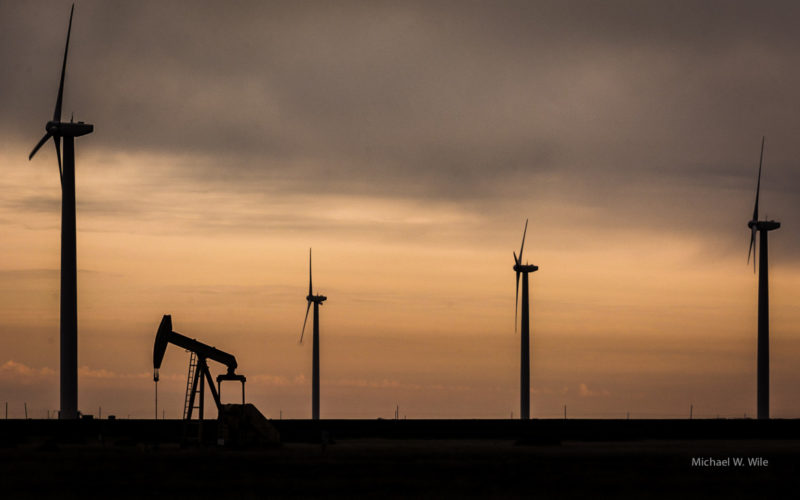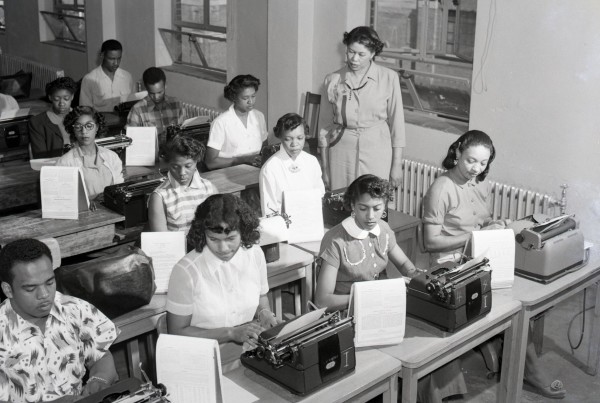From Inside Energy.
In North Dakota’s Bakken oilfield, demand for electricity has skyrocketed – unlike much of the rest of country, where demand been flat since the recession. Dale Haugen has seen this first hand as general manager of the Mountrail Williams Electric Cooperative, which serves the heart of the Bakken. In the early 2000s, things were pretty grim at the coop’s offices, and in Western North Dakota, in general.
“We were continually losing farms and businesses,” Haugen said. “You’d go to church and you’d see people sit next to you and you’d go, ‘tomorrow I’ve got to lay them off.’ That’s tough.”
Then in 2005, everything changed. An oil company called EOG Resources drilled the first successful oil well into the Bakken shale formation just outside the tiny town of Parshall, right in Haugen’s service area. Soon, dozens of oil companies were following EOG’s lead, drilling long horizontal wells and fracking them to crack the rock and release oil.
For Haugen, every oil well was a new customer, and a bigger customer than he was used to. One oil well uses about as much power as three or four homes, and by May 2015 there would be over 12,000 of them in North Dakota, up from 3,400 in January 2006. Pipelines, natural gas compressors and processing plants use even more power than that.
Today, Mountrail Williams sells over 80 percent of its power to the oilfield — a huge reversal from 2004, when residential customers and small commercial businesses made up over half of their base. In the last seven years, the amount of power the coop sells grew by a factor of 10.
And it isn’t just in Mountrail and Williams Counties — electricity sales in North Dakota shot up 27 percent between 2008 and 2013, more than anywhere else in the country.
That power has to come from somewhere. Dale Haugen’s utility distributes electricity, but doesn’t own the power plants themselves. Instead, he buys his power from Basin Electric Power Cooperative.
With 3 million customers in 9 states (Colorado, Iowa, Minnesota, Montana, Nebraska, New Mexico, North Dakota, South Dakota, and Wyoming), Basin Electric is a large utility, but it feels homey. When you walk in, there’s a display telling you what’s for lunch. Today, it’s tatertot hotdish – Midwestern for casserole.
By 2035, the Bakken oilfield region will need three times as much power as it needs today, and it is Basin Electric’s job to figure out where that power comes from.
“I don’t know of any other utility that’s dealing with these kinds of growth issues,” said Steve Tomac, a lobbyist for Basin Electric.
Basin Electric has done three things to meet that new demand. First, buy power from nearby utilities that have surplus supplies. Second, get that power into the oilfield with a new transmission line. And third, build new power plants that run on natural gas instead of coal.
That last step is a big deal for Basin Electric because it has always used coal – there’s tons of it in North Dakota and it’s cheap to mine. But a few years ago, investors started telling Basin that they would not help them finance new coal-fired power plants, in part because they were anticipating theClean Power Plan, President Obama’s rule to cut carbon dioxide emissions from power plants.
That plan makes it very difficult to build new coal-fired power plants without some kind of carbon capture technology. In addition, natural gas prices fell, making gas-fired power plants, which emit about half the carbon dioxide as coal, more attractive.
With regulations and market factors like low natural gas prices, the economics of coal just weren’t adding up anymore. So Basin Electric began building wind farms and natural gas plants. And they had to do it fast – faster than they were comfortable with.
When Dale Haugen told Basin Electric just how soon he was going to need more power to meet oilfield demand, they couldn’t believe it.
“They thought I ought to go be pulled through a knot hole on a wooden fence,” he said, laughing. “They were shocked.”
But Basin Electric has managed the transition well, going from from shocked to making it work. With some growing pains, they’ve figured out how to power the number two oil producing state. As utilities around the country puzzle over how to provide more power, one industry analyst I talked to said he wouldn’t be surprised it they call on Basin Electric to ask them how they did it so fast, and how they did it without coal.

















